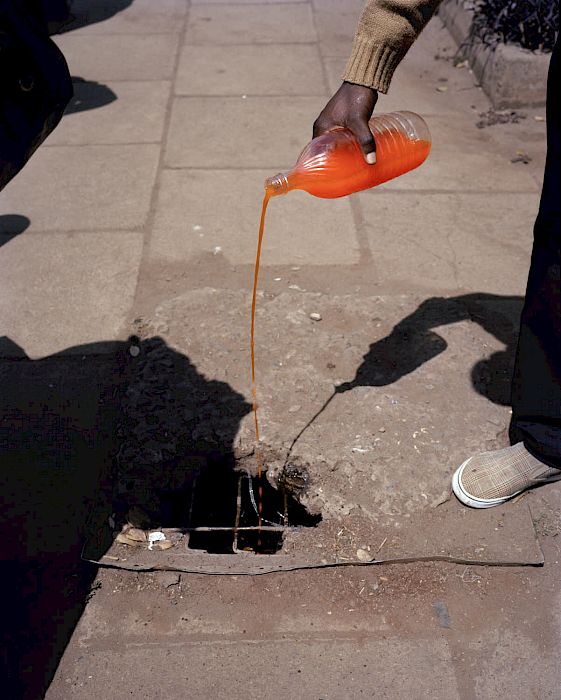 |
Taradiddle.By Charles Traub. |
Damiani, 2018.
116 pp., 102 illustrations, 9½x11¾".
Charles Traub has quietly exerted his influence on an entire generation of photographers, having served as founder of the precursor to MOCP in Chicago, director of Light Gallery, founding chair of the MFA photo program at SVA, creator of Here Is New York, president of the Aaron Siskind Foundation. The list goes on. His fingerprints are everywhere in photographic education, even in the form of a titular 2006 book, The Education of A Photographer.
Throughout his career in academia, Traub has been busy taking photos. He's been at it almost a half-century now, producing several monographs along the way. An early student of Meatyard and Siskind, Traub's photos have always danced on the edge of reality. But Traub's style is looser than his mentors’, favoring a snapshot aesthetic, which has blossomed in the current age of digital profligacy. “For me,” says Traub, “serendipity, coincidence and chance are more interesting than any preconceived construct of our human encounters.” If he's always been leery of staid concepts like tripods and previsualization, his most recent book declares open war against them. Indeed, it challenges the notion of photographic truth itself, starting with the title: Taradiddle: 1. A Petty Lie; 2. Pretentious nonsense.
This definition is announced in bold type on the opening page. It sets a defiant tone for the pages to follow, sandwiched by a similar declaration at the end: “[the photos] were all observed in the real world and only when captured by my camera, as seen in the moment, did they become fabrications.”
Such fabrications, one hundred of them, comprise the meat of a book that is primarily about photography itself. If “photography has thickened the modern environment to the point of torpor,” as David Campany’s afterword describes the situation, Traub takes up the challenge. “BRING THE CAMERA,” shouts the book’s very first photo, a message handwritten on a rock. This is followed by photos of shutterbugs doing just that, four among the next six images. One of them is Traub himself, caught in a quiet moment of self-reflection. “Just what is photography, anyway?” he seems to be asking. “Why do it?” His mirrored face is framed in by hundreds of small studio headshots, an answer of sorts.
Appropriated images continue as a central motif throughout the book. Traub incorporates posters, advertisements, graffiti, and murals into his photos. Renaissance paintings make several appearances, as do animal statues, billboards, and other street tropes. These are sometimes shot in hackneyed ways — by now we've all seen a thousand cute posters juxtaposed with pedestrians — but they hammer home Traub’s thesis: as image makers in a media-saturated world, photographers must come to grips with the surroundings. If that means incorporating images into photos, so be it.
In this sense, Taradiddle continues the quixotic quest of his earlier books. Dolce Vita, Lunch Time, and In the Still Life (with two photos from Taradiddle) also picked chance moments from a colorful image-drenched world. But those books had ulterior themes. In its title and approach, Taradiddle is a coming out party for Traub, his declaration after a half-century that structured projects are secondary to the basic riddle of image-making.
Questions of fidelity have nagged at photography since its inception. In Hine’s words, “Photographs don't lie but liars may photograph.” For some photographers, fighting words. But Traub is untroubled. He tackles the issue sideways, with prankster delight. Lifting his photos above the theoretical fray is a playful sense of humor, something “devoid” in the medium according to Traub. Campany links this light touch to the profound, “in the way that photography seems uniquely predisposed to the profound: by being naturally and unapologetically light.” But such intellectual gymnastics aren't necessary to enjoy Traub’s photos. Beyond the petty lies, beyond pretentious nonsense, the profound pleasure of looking is enough.
Read More Book Reviews
 Blake Andrews is a photographer based in Eugene, OR. He writes about photography at blakeandrews.blogspot.com.
Blake Andrews is a photographer based in Eugene, OR. He writes about photography at blakeandrews.blogspot.com.




































































































































